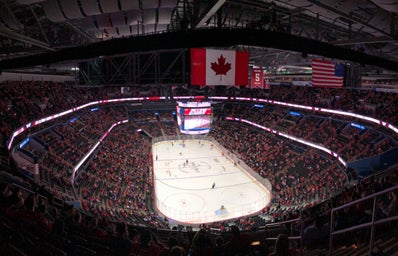Every year the winter break rolls around and with it comes the men’s World Junior hockey championship, something that I, along with over 100 million viewers worldwide now, enjoy watching every year. However, due to the surge of Omicron cases, the International Ice Hockey Federation (IIHF) announced on the 29th of December that despite their best efforts, the 2022 World Juniors would be cancelled after multiple players tested positive for the virus. The men’s 2022 World Juniors was not the only IIHF event to suffer at the hands of the new COVID variant; the women’s U-18 World Championships (essentially the women’s equivalent of the men’s U-20 World Juniors), which was set to commence after the World Juniors, was cancelled for the second year in a row. This December 23rd announcement brought the issue of neglecting women’s sports to the forefront.
The cancellation of this tournament sparked outrage not simply because the pandemic had once again ruined one of the biggest tournaments of the year for these athletes, but also because when the decision was made to cancel the women’s tournament, along with several other IIHF events set to take place in January, the intention was to move forward with the World Juniors as planned. The IIHF defended their decision amidst the backlash, explaining that the men had already entered quarantine when the decision had been made and that Sweden, the host of the women’s tournament, had potential scheduling conflicts that would make postponing the tournament difficult. This explanation falls short of explaining why the tournament could not have been postponed with a different location taking on the hosting responsibilities and demonstrates a lack of commitment to supporting women’s sports.
“Why is it automatically a cancellation? We understand the concerns regarding health and safety but why is a postponement not considered for these women as the men’s tournaments continue without hesitation?”
Erin Amrose, Canadian women’s national team gold medalist.
Alongside many other accomplished female athletes, Canadian Hockey Hall of Famer and four-time Olympic gold medalist Hayley Wickenheiser tweeted on the matter, questioning the will of the IIHF to build up women’s sports. She highlights the disparity between the revenue the World Juniors tournament brings in compared to that of the women’s U-18 tournament, citing this disparity as the reason the IIHF is willing to move forward with the World Juniors tournament despite the growing health and safety concerns. Her tweet alludes to the issue that, as a business, the IIHF’s top priority is revenue and as a result, it seems unwilling to risk profit as the cost of the initial build-up of women’s hockey. While the IIHF will move forward with women’s tournaments so long as they do not incur too high a cost, it seems that they will move forward with men’s tournaments until they are forced to shut down as a result of too many COVID cases.
The women’s U-18 tournament has historically been neglected by the IIHF. In 2019, while the men’s World Juniors tournament was broadcast live on TSN with commentators, the women’s tournament was streamed online with no commentators. For the first few games, the women were filmed solely through a singular fish-eyed security camera, which not only generated blurry graphics but also was unsuitable for filming a fast-paced sport, making it impossible for viewers to follow the puck. So while the pandemic is partially to blame for the most recent offences, the IIHF and other sports associations are not free of blame when it comes to neglecting women’s sports.
“In the 25 years since TSN acquired the broadcast rights to the world juniors, it has evolved from a low-key curiosity to one of the biggest tentpole events in Canadian sports programming.”
Scott Stinson, 2018
As the above quote from Scott Stinson explains, the World Juniors became a massive sporting event as a result of the money put into it. When there is money and effort put into advertising women’s hockey, the results speak for themselves. Women’s Olympic hockey garners millions of viewers; this year’s rivalry series between the United States and Canada (which was also cancelled due to the pandemic), as well as the 2021 Women’s World Championships this summer, were popular events that garnered viewership throughout their broadcasts. The excuse that women’s sports are simply not as popular as men’s sports or do not garner enough viewership to be profitable is no longer acceptable; the success of the World Juniors proves that if there is a will, there is in fact a way. The IIHF and broadcasting networks like TSN just need to be willing to invest in women’s hockey upfront so that tournaments like the women’s U-18 World Championships can get their time in the spotlight.
The World Juniors have jump-started the careers of many National Hockey League (NHL) and Hockey Canada stars, including Wayne Gretzky and Sidney Crosby. It is unfair to the female athletes who work just as hard as their male counterparts that the women’s tournaments receive little to no support from, and exist as an afterthought to, the networks. If women’s hockey is to become something that young girls strive to be a part of, we need to give them something to strive for. Men’s hockey encourages young boys to strive to make the NHL, where they can make a livelihood and even become an icon from their hockey skills; the same cannot be said for women’s hockey. Young girls need an end-goal to strive for, and networks are at the forefront of supporting this drive. It is imperative that networks like TSN and the IIHF put in the effort to build up women’s hockey; the success of the World Juniors proves that they can and should.
Canadians look forward to watching women’s hockey at the Olympic games every four years, and it’s time we stop forgetting they exist outside of the Olympics. It may take time for these investments to pay off, so why not start now?


